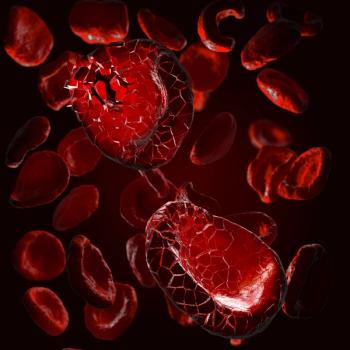
Lilian Gien, MD, Reviews Pembrolizumab Plus Epacadostat in Recurrent Clear Cell Carcinoma of the Ovary
At 2022 IGCS, Lilian Gien, MD, spoke about a phase 2 trial which analyzed pembrolizumab plus epacadostat in patients with recurrent clear cell carcinoma of the ovary.
During the
The objective response rate was 21% (95% CI, 0.05-0.51) and patients had a median duration of response of 6.9 months. Out of a cohort of 14 patients, 3 had a partial response and 4 had stable disease for a disease control rate of 50%. Additionally, the median progression-free survival was 4.8 months (95% CI, 1.9-9.6) and the median overall survival was 18.9 months (95% CI, 1.9-not reached).
Although the investigators ultimately determined that the results were inconclusive for determining a benefit of the addition of epacadostat to pembrolizumab in this setting, the results were thought provoking and add to what is known about immunotherapy use.
Transcript:
We know that recurrent clear cell cancers of the ovary are an area of unmet need. We do know that in any phase 2 studies that have been done on all epithelial ovarian cancers that include clear cell, responses to immunotherapy monotherapy is around 15%. Among those studies, we saw that clear cell carcinomas, in particular, seem to have a more pronounced and durable response than other types of ovarian cancer. We thought we could build on that by seeing if we can improve the 15% overall response rate with a combination therapy, particularly for ovarian cancers that are clear cell and have a poor response to chemotherapy otherwise.
This was a single-arm phase 2 study of recurrent or metastatic clear cell cancers of the ovary. We gave 2 agents, one was pembrolizumab at 200 mg intravenously every 3 weeks, as well as an IDO1 inhibitor called epacadastat, which was given at 100 mg orally twice a day. The combination of those 2 was given together until progression or toxicity, and the overall response rate was the primary end point. There was approximately a 21% overall response rate. This was in a small cohort of patients. The plan for the sample size was to recruit enough patients for the first stage, and if there was adequate response then open it up to the second stage for a total of 23 patients. We recruited the first 14 patients in the first stage quickly and that’s what we did the analysis on. Because of a number of logistical issues, we were unable to complete the study up to the full 23 patients. In the small cohort that we had with 14 patients, the response rate was 21%.
There was mostly grade 1 and 2 adverse effects, things like nausea, vomiting, and some electrolyte abnormalities. The grade 3 adverse effects were things like bowel obstruction, and there were some nutritional issues as well. Overall, the vast majority were grade 1 and 2.
Reference
Gien LT, Enseroo DM, Block MS, et al. Phase II trial of pembrolizumab and epacadostat in recurrent clear cell carcinoma of the ovary: an NRG Oncology Study (NRG-GY016). Presented at: 2022 Annual Global Meeting of the International Gynecologic Cancer Society; New York, NY; September 29-October 1, 2022. Abstract O014.
Newsletter
Stay up to date on recent advances in the multidisciplinary approach to cancer.


















































































